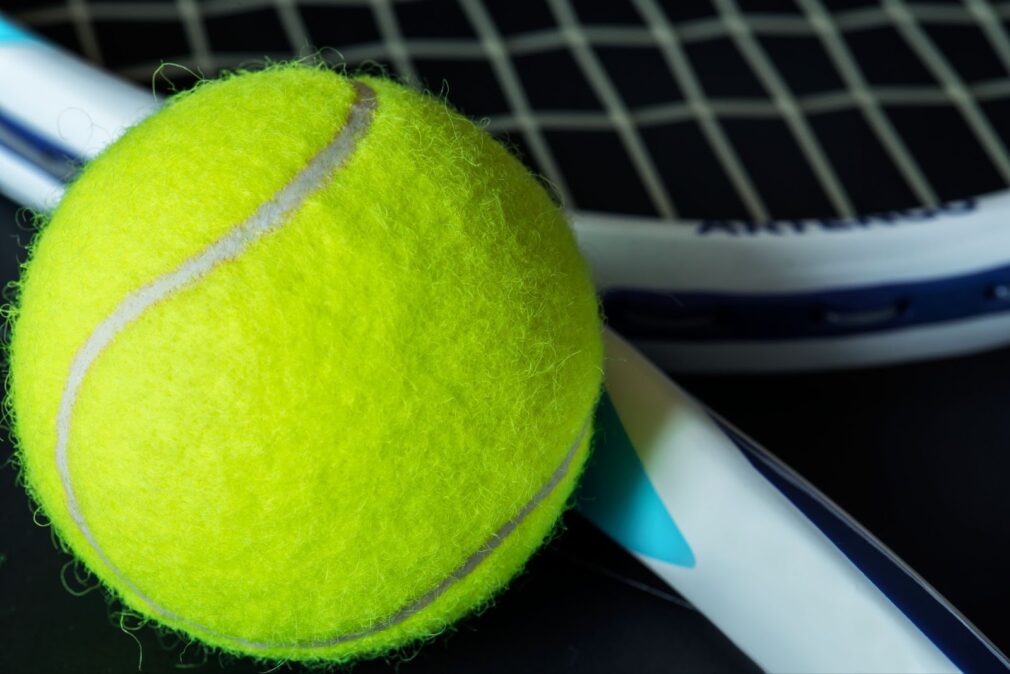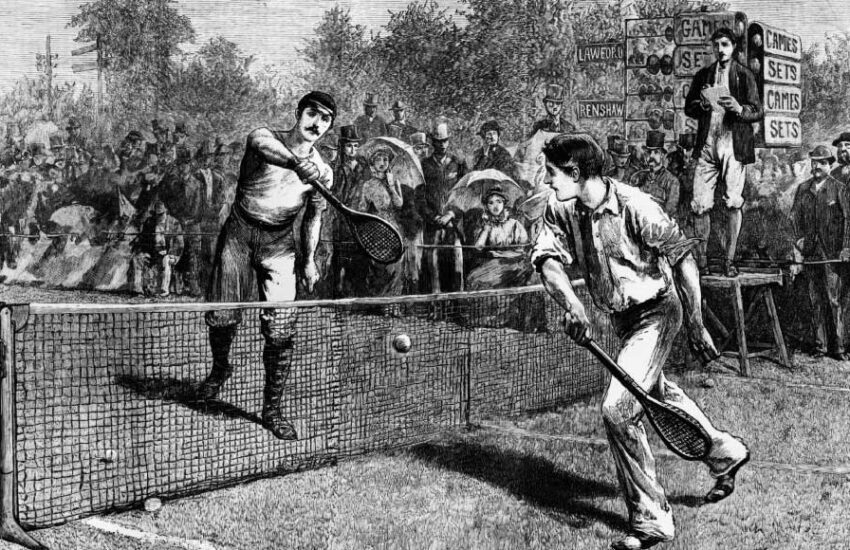Tennis Ball Dimensions Unveiled: What’s the Size?
Step into the intriguing realm of tennis balls with us! While one might assume that all tennis balls are identical, reality tells a more nuanced story. In the following article, we shall delve into the intricacies of these vibrant yellow orbs, examining not only their physical dimensions of size and weight but also the profound impact these specifications can exert on your on-court performance.
Have you ever considered that even the slightest variation in ball weight or diameter could wield significant influence over your serve velocity and bounce consistency? It’s a captivating revelation! Whether you’re an ambitious professional athlete in search of any potential advantage, a leisurely weekend player seeking insights into the mysteries of unexpected shot outcomes, or merely an avid knowledge seeker, this comprehensive guide is tailor-made for your curiosity.
Unlocking the Secrets of Tennis Ball Specifications
When you step onto a tennis court, you might not give much thought to the size and weight of the ball you’re about to serve and volley with. But there’s more to it than meets the eye. In this comprehensive guide, we’ll take you on a journey through the fascinating world of tennis ball specifications. We’ll dive into the standard size and weight of a tennis ball, explore its dimensions and shape specifications, and discuss why adhering to these standards is not just a formality but crucial for the integrity of the game.
Understanding the Standard Size and Weight of a Tennis Ball
Size Matters
The International Tennis Federation (ITF), the governing body for professional tennis, is meticulous about setting the standards for tennis equipment, including the tennis ball. Let’s start with the size. Ever wondered how big a standard tennis ball should be? The ITF has defined it with precision.
A regular-sized tennis ball should have a diameter falling within the range of 2.57 inches (65.41 mm) to 2.70 inches (68.58 mm). To put it in perspective, this is roughly equivalent to the size of an average apple. But why is this size specification so crucial?
- Consistency: By ensuring all tennis balls fall within this size range, the ITF guarantees that players can anticipate the ball’s bounce and trajectory, promoting fair play;
- Predictability: Consistent ball size allows players to develop their skills and strategies with confidence, as they know what to expect from each serve and volley;
- Level Playing Field: In professional tennis, where every advantage counts, standardized ball size eliminates the possibility of one player using a slightly larger or smaller ball to gain an edge.
Weighty Matters
Now, let’s talk about the weight of a standard tennis ball. It might surprise you to know that there’s a precise weight range for these seemingly lightweight spheres.
A regulation tennis ball should weigh between 1.975 ounces (56 grams) and 2.095 ounces (59 grams). To put this into perspective, it’s just slightly heavier than three AA batteries combined. Why does the ITF go to such lengths to specify the weight of a tennis ball?
- Fair Competition: The weight range ensures that no player gains an advantage by using a significantly lighter or heavier ball. Fair competition is at the heart of the sport;
- Consistency in Play: A consistent weight among tennis balls promotes uniformity in the way they behave during a match. Players can rely on the predictability of ball movement.
Unlocking the Science Behind Tennis Ball Dimensions and Shape Specifications
Tennis balls, often overlooked but crucial to the sport, play a pivotal role in defining the dynamics of a tennis match. From their shape to weight, these seemingly simple spheres are subject to a world of precise specifications set by the International Tennis Federation (ITF) to ensure equitable gameplay. Let’s delve into the intricate details of tennis ball dimensions and shape specifications, unlocking the science behind the game.
Spherical Symmetry: The Key to Tennis Ball Design
The very essence of a tennis ball’s design is its spherical shape. Picture a globe or a basketball, and you’re on the right track. This characteristic might seem elementary, but it’s fundamental to the game’s integrity. The perfect roundness ensures that each player faces the same aerodynamic challenges, contributing to fair competition.
Diameter Matters: Precision Within Limits
Now, let’s talk numbers. The ITF has defined a specific range for the diameter of a tennis ball, which is the distance from one side through the center to the other side. This critical dimension falls between 2.575 inches (6.54 cm) and 2.700 inches (6.86 cm). Within this seemingly narrow range, there’s room for variation, and that’s where the magic happens.
- Proper Bounce: Tennis balls at the lower end of this diameter range tend to have a slightly lower bounce. On the other hand, those closer to the upper limit exhibit a more pronounced bounce. Players can strategically choose balls within this range to suit their playing style;
- Material Matters: Manufacturers use different materials to craft tennis balls, and the choice of material can also influence the bounce. Regular felt-covered tennis balls tend to have a predictable bounce, while pressureless balls maintain their bounce over a more extended period.
Balancing Act: The Weight of a Tennis Ball
Beyond shape and size, the weight of a tennis ball is another crucial factor. ITF mandates that a tennis ball should not exceed 58 grams but should not be lighter than 56 grams either. This seemingly narrow weight range plays a significant role in determining a ball’s performance.
Power and Control: Tennis players often have preferences when it comes to ball weight. A heavier ball can generate more power and control, which is favored by baseline players, while a lighter ball may suit those who rely on speed and agility.
Type Matters: Different Balls for Different Games
It’s fascinating to note that while we may perceive all tennis balls to be identical, there are slight variations within these specified limits. These variations are based on the type of ball, designed for specific levels of play, be it professional matches or recreational use.
- Professional Tennis Balls: Tennis balls used in professional matches often lean toward the upper limits of diameter and weight specifications. They are meticulously crafted to meet the demands of elite athletes, offering consistent bounce and durability;
- Recreational Tennis Balls: On the other hand, recreational tennis balls may fall within the lower end of the size and weight spectrum. They are designed for casual play, offering an accessible and enjoyable experience for players of all skill levels.
The Significance of Complying with Official Tennis Ball Specifications
Tennis, a sport cherished for its thrill and elegance, harbors a secret behind those furry yellow spheres that dash across the court. Did you ever stop to wonder if not just any tennis ball could be used in official matches? Believe it or not, there are stringent regulations governing the type of tennis ball deemed suitable for professional gameplay, and it’s not just about hitting a yellow orb over a net. Also, unlock the mystery: Discovering the true meaning of ‘ad’ in tennis. Dive into the fascinating world of tennis lingo!

The International Tennis Federation (ITF) Dictates the Rules
The International Tennis Federation, fondly known as the ITF, stands as the custodian of tennis regulations, encompassing a wide array of specifications pertaining to tennis balls. These encompass not only the basic dimensions like size but also delve into nuanced characteristics such as weight, bounce height, and even the fuzziness of the ball’s exterior. Let’s take a deeper dive into these essential criteria:
1. Size Matters
An approved tennis ball must boast a diameter that falls within the narrow range of 6.54 to 6.86 cm. This seemingly minuscule range is pivotal to the integrity of the game, ensuring consistency across the board.
2. Weight Watch
Weight is another factor that the ITF meticulously regulates. The standard tennis ball weighs between 56.0 to 59.4 grams. Deviations from this range could significantly impact the dynamics of the game.
3. The Bounce Factor
Bounce height is yet another crucial aspect addressed by the ITF. A tennis ball must have a specific bounce height when dropped from a set height. This ensures that players can anticipate the ball’s trajectory accurately.
4. The Fuzziness Factor
The fuzziness of a tennis ball’s exterior isn’t merely an aesthetic concern. The ITF mandates a particular fuzziness level, which directly affects the ball’s aerodynamics and, consequently, its performance on the court.
Why it Matters?
Now, you might be wondering why all this meticulous regulation is necessary. The reason is simple: fairness and consistency. These standards play a pivotal role in maintaining a level playing field in the world of professional tennis:
1. Fair Competition
Ensuring that every player uses the same type of equipment minimizes the chances of one player gaining an unfair advantage. Imagine if one player could use larger or heavier balls – the game’s integrity would be compromised.
2. Consistent Practice
Adhering to official tennis ball specifications is not just about the pros. It extends to everyday practice sessions as well. When players use balls that meet ITF standards, they ensure that their practice sessions mirror the conditions they will encounter in tournament play. This consistency is essential for honing their skills effectively.
Conclusion
In conclusion, our journey into the world of tennis balls has revealed the intricate details that set these seemingly uniform spheres apart. We’ve explored the dimensions of size and weight and how they can wield a substantial impact on your performance on the tennis court.
The subtle differences in ball specifications underscore the importance of paying attention to detail in the pursuit of excellence in tennis. Whether you’re striving for professional success or simply seeking a better understanding of the game, the significance of these factors cannot be underestimated.
So, the next time you step onto the court, armed with this newfound knowledge, you’ll be better equipped to harness the advantages that lie within the subtle variations of tennis ball design. May your serves be more powerful, your shots more consistent, and your appreciation for the intricacies of the game grow ever deeper. Happy playing!



